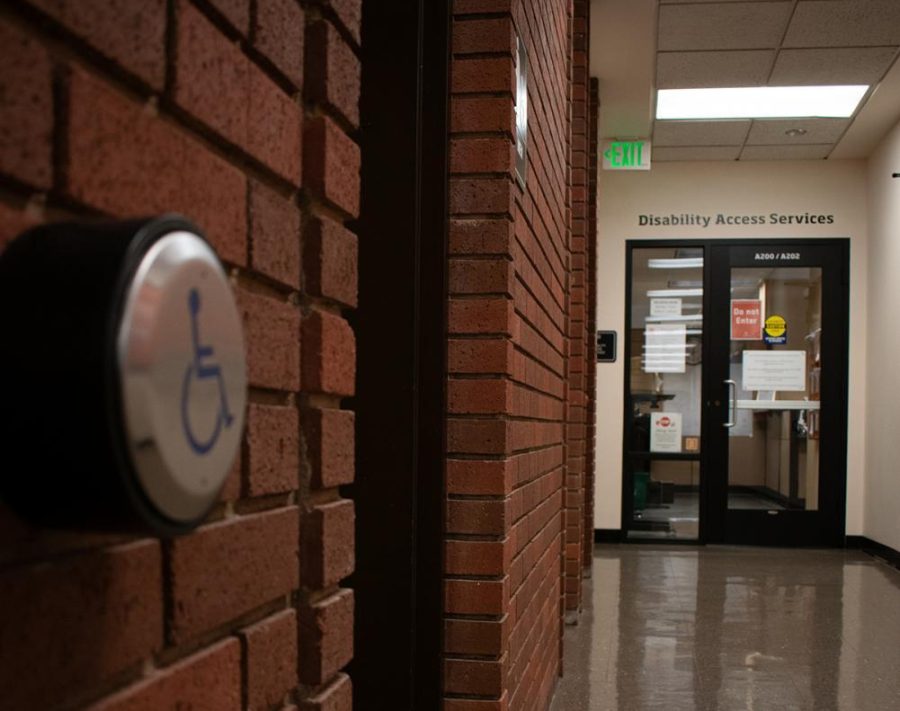OSU students report issues with accessibility on campus
The office of disability services located in the Kerr administration building oversees all accessibility on the Oregon state campus. Due to Covid all work has been moved to a virtual setting. From the Orange Media Network archives.
March 29, 2022
Correction: The story originally incorrectly stated Gabriel Merrell is the director of Disability Access Services. This has been corrected to state that Merrell is the director of Access and Affirmative Action within the Office of Equal Opportunity and Access and deputy ADA coordinator. The Barometer regrets this error.
Some students have raised concerns about issues with accessibility and Disability Access Services on the Oregon State University campus while praising OSU community members for trying to be disability friendly.
According to the DAS website, the DAS “provides accommodations, education, consultation and advocacy for qualified students with disabilities at OSU.”
One student who interacts with DAS, Madison Tubbs, found that the service was more helpful when initially applying to OSU, but as time has passed, she said she has had a harder time working with DAS.
“I’ve wanted to add and adjust my accommodations and that has been a much more difficult process,” she said.
According to Tubbs, she has reached out to DAS multiple times and has not received a response. When she talked to her personal advisor at DAS to fix the problem, the advisor told her that she did not have the authority to change her accommodation plan and that Tubbs would have to reach out again to the appropriate people.
Tubbs said she thinks DAS would be more helpful if they made their resources more accessible. She said it’s hard to figure out where to start, especially if students trying to access DAS are not neurotypical.
Tubbs said teachers have been helpful for the most part, but because she has a psychiatric service dog, teachers struggle to seat her.
“There isn’t a lot of accessible seating, especially in classes like biology where we’re assigned groups and we are sat in specific areas of the classroom,” she said.
Brady Reed, a freshman in Hawley Hall and member of Alpha Tau Omega, said he’d sprained his ankle early in winter term and was in crutches. During this period, he said he discovered the OSU campus was not disability friendly.
“A lot of Greek life areas do not have any sort of ramp, and the stairs are quite steep and winding,” he said.
Most of the OSU buildings are fine, Reed said, but some buildings like Kidder Hall do not have ramps that are easy to find.
“When it was really wet and really cold, I noticed that I had very little traction in my crutches,” he said. “Sometimes, I actually caught myself on my bad foot twice and I remember just a shooting pain.”
Living in the dorms was also a struggle, according to Reed. He said entering his dorm was a struggle since he had to find his key card and tap it on the scanner on crutches. He said his dorm did have an elevator, but other dorms such as Sackett do not have one.
“It was a struggle not having any good support in the showers… The handlebars that I did have were an inch off the wall, so you couldn’t maneuver around them much,” he said.
According to Reed, however, the OSU community was very helpful. People opened doors for him and tried to help in any way they could.
Gabriel Merrell, the director of Access and Affirmative Action within the Office of Equal Opportunity and Access and deputy ADA coordinator, said historical buildings were not designed to be accessible everywhere, but OSU has made significant progress to make the campus more physically accessible.
Many of the newer halls, like Tebeau Hall, have a more universal design, Merrell said. Every room was made to be easily modified to be more accessible, and restrooms and doors were sized to be large enough to fit a wheelchair.
“OSU takes very seriously the obligation and opportunity to make our physical facilities more accessible to the disabled community,” he said.


















































































![Newspaper clipping from February 25, 1970 in the Daily Barometer showing an article written by Bob Allen, past Barometer Editor. This article was written to spotlight both the student body’s lack of participation with student government at the time in conjunction with their class representatives response. [It’s important to note ASOSU was not structured identically to today’s standards, likely having a president on behalf of each class work together as one entity as opposed to one president representing all classes.]](https://dailybaro.orangemedianetwork.com/wp-content/uploads/2025/03/Screenshot-2025-03-12-1.00.42-PM-e1741811160853.png)
























